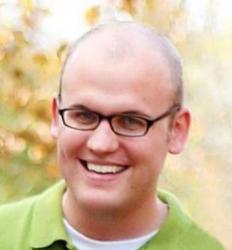In recent years, we’ve seen the emergence of new social crises across America’s middle and working classes, from the opioid epidemic to declines in marriage and family stability to the dilution of social capital. In response, many have been quick to point their fingers at the economic disruption caused by trade and technology.
Yet according to Tim Carney, author of the new book, Alienated America: Why Some Places Thrive While Others Collapse, the data tell a different story about the transformative effects of religious communities (or a lack thereof). (Carney will be offering a lecture on his book at Acton’s forthcoming “On Tap” event on April 3 in Grand Rapids, MI.)
Before and beyond any economic forces or factors, Carney argues, individual behavior appears to be closely tied to participation in religious communities—or a lack thereof. And in an age when church attendance is rapidly declining, few are paying attention to the social and economic ripple effects.
“In middle-class and working-class America, the more religious counties do better, and the least religious counties do worse,” Carney writes in The New York Post. “There are piles of data on this…As politicians and social leaders try to pinpoint the root cause of American woe, they should start by looking at the closing churches — and the ones that are bustling.”
Carney uses Sioux County, Iowa, as one example. With the state’s highest levels of both evangelicals and mainline Protestants, the county also happens to boast “the second-lowest portion of residents on disability in Iowa and the lowest drug-overdose rate in the state.” Meanwhile, “counties at the bottom of ARDA’s religiosity rankings in Iowa…have (per capita) the most overdoses, the most violent crimes, and the most disability claims,” Carney explains.
This is not unique to Iowa, of course—or the Midwest, or the Rust Belt, or anywhere else. We see these same trends and connections across the country, spanning the full range of challenges we are bound to encounter in social life:
Men who go to church regularly are, according to various studies, more likely to get married, and less likely to cheat on their wives or girlfriends, to abuse them, or to get divorced. It’s the same for kids. Churchgoing kids abuse drugs less and have better relationships with their parents, according to Robert Putnam, author of “Bowling Alone: The Collapse and Revival of American Community.”
Families that attend church, synagogue or mosque every week are more likely to eat dinner together every day and go on regular family outings, according to the American Family Survey conducted by the Deseret News and BYU. The General Social Survey finds that 50 percent of Americans who go to church more than once a week call themselves “very happy.” That number drops as church attendance drops, down to only 25 percent for those who go once a year or less.
As Carney makes clear, it is not necessarily religious belief, but rather consistent participation in religious communities that appears to be the key. It goes beyond head-knowledge and heart-transformation; it’s about how the embodied change is applied and takes shape through human relationships and the emergence of moral communities.
“Belonging to a church is a crucial element of living a good, happy, healthy life,” Carney explains. “And this phenomenon ripples out from the individuals into the community. Places like Sioux Center, or like Salt Lake City, with full vibrant churches, are places with more upward mobility, more marriage, and more family formation.”
In a statement before the Joint Economic Committee, Charles Murray, author of Coming Apart, recently affirmed this same reality. Though a self-described agnostic, Murray recognizes that “communities of faith” are essential for equipping and empowering individuals for the rest of life. They are particularly important, he argues, when moments of relational or economic crises hit:
With regard to religion, I am making an assertion about a resource that can lead people, adolescents and adults alike, to do the right thing even when the enticements to do the wrong thing are strong: a belief that God commands them to do the right thing,” Murray explains. “For its active members, a church is far more than a place that they go to worship once a week. It is a form of community that socializes the children growing up in it in all sorts of informal ways, just as a family socializes children.
Unfortunately, while there are distinct clusters like Sioux County or Salt Lake City that have thriving religious subcultures, the vast majority of American cities and communities are experiencing a decline in church participation. “Just from 2007 to 2014, the portion of people attending every week dropped from 40 percent to 36 percent, according to the Pew Research Center,” carney writes. “Going back further, to the mid-1950s, the number of Americans attending a house of worship was as high as 49 percent, Gallup reported.”
The void is apparent, and yet the solution is not prone to quick-and-fast policy grabs or coercive social engineering. To revive our communities, it will require a renewed focus on what truly matters, as well as corresponding renewal and bottom-up cultural witness across all spheres of society, but especially in our religious communities.
Image: Country Church in North Central Iowa, PaulAdamsPhotography (CC BY 2.0)


